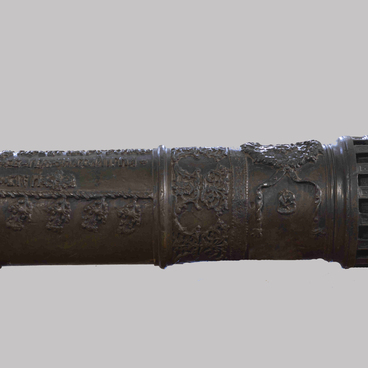The military career of Nikolay Nikolayevich Raevsky formally began at the age of three, when he was enlisted in the Preobrazhensky Life Guards Regiment, and in fact — at the age of 14. At that time, “by seniority”, he was already listed as an ensign. Young Raevsky was placed under the command of his great-uncle Grigory Potemkin. It was Field Marshal Potemkin who said that one has to test his own courage first and then constantly work on strengthening it.
In 1787, Potemkin seconded Raevsky to a Cossack unit with instructions first and foremost to treat him as a simple Cossack and only then as one with the rank of lieutenant. Raevsky’s first battle taught him to share the difficulties of military campaigning with the rank and file.
On the next stage of Nikolay Raevsky’s career, he head a regiment of Poltava Cossacks.
After participating in the Russo-Turkish War at the age of 19, Nikolay Raevsky became a lieutenant colonel. At the age of 21, after the Polish campaign, he became a recipient of the St. George and Vladimir Orders, 4th class.
At the age of 23, in the Derbent campaign, he proved himself as a competent commander, maintaining discipline and order in difficult conditions.
In 1797, Paul I removed Raevsky from service without any explanations, but Alexander I called him back and promoted him to major general.
Raevsky became a nationally beloved figure after the Battle of Saltanovka. His Smolensk division faced five French divisions led by Marshal Louis-Nicolas Davout, nicknamed “the Iron Marshal”. Seeing the confusion of his soldiers, Raevsky himself went out in front of the army and led it forward with an appeal, “for the tsar and for the Fatherland.” There was a popular rumor that next to the commander were his two sons, Alexander and Nicholas who were 17 and 11 years old. However, Raevsky himself disputed this fact, claiming that he took his sons to the front line with him, but did not take them into the attack.
During the battle, he was seriously wounded in the chest, but the soldiers inspired by the example of their commander, forced the enemy to flee.
The Russian defense of Kurgan Heights in the Battle of Borodino, which were eventually captured by the enemy, went down in military history as the “Raevsky’s redoubt” among the Russians and the “grave of the French cavalry” among the French. For this feat, Raevsky was awarded the Order of St. Alexander Nevsky.
According to a family legend, after retiring as a cavalry general, Raevsky refused the title of count and spent the rest of his life in Kyiv Governorate. General Raevsky was granted twelve Russian, Austrian and Prussian orders and two golden swords “For Bravery”. His tombstone features an epitaph, “In Smolensk he was the shield, // In Paris he was the sword of Russia.”
In 1787, Potemkin seconded Raevsky to a Cossack unit with instructions first and foremost to treat him as a simple Cossack and only then as one with the rank of lieutenant. Raevsky’s first battle taught him to share the difficulties of military campaigning with the rank and file.
On the next stage of Nikolay Raevsky’s career, he head a regiment of Poltava Cossacks.
After participating in the Russo-Turkish War at the age of 19, Nikolay Raevsky became a lieutenant colonel. At the age of 21, after the Polish campaign, he became a recipient of the St. George and Vladimir Orders, 4th class.
At the age of 23, in the Derbent campaign, he proved himself as a competent commander, maintaining discipline and order in difficult conditions.
In 1797, Paul I removed Raevsky from service without any explanations, but Alexander I called him back and promoted him to major general.
Raevsky became a nationally beloved figure after the Battle of Saltanovka. His Smolensk division faced five French divisions led by Marshal Louis-Nicolas Davout, nicknamed “the Iron Marshal”. Seeing the confusion of his soldiers, Raevsky himself went out in front of the army and led it forward with an appeal, “for the tsar and for the Fatherland.” There was a popular rumor that next to the commander were his two sons, Alexander and Nicholas who were 17 and 11 years old. However, Raevsky himself disputed this fact, claiming that he took his sons to the front line with him, but did not take them into the attack.
During the battle, he was seriously wounded in the chest, but the soldiers inspired by the example of their commander, forced the enemy to flee.
The Russian defense of Kurgan Heights in the Battle of Borodino, which were eventually captured by the enemy, went down in military history as the “Raevsky’s redoubt” among the Russians and the “grave of the French cavalry” among the French. For this feat, Raevsky was awarded the Order of St. Alexander Nevsky.
According to a family legend, after retiring as a cavalry general, Raevsky refused the title of count and spent the rest of his life in Kyiv Governorate. General Raevsky was granted twelve Russian, Austrian and Prussian orders and two golden swords “For Bravery”. His tombstone features an epitaph, “In Smolensk he was the shield, // In Paris he was the sword of Russia.”






